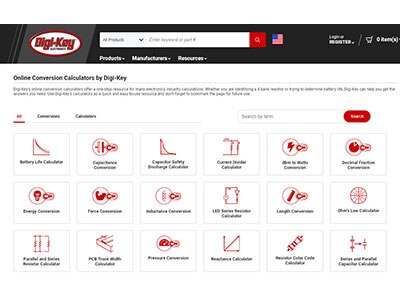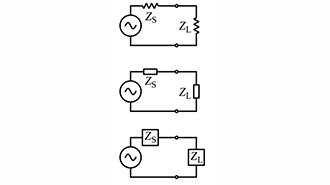What Is a High Pass Filter? Understanding an Electronic Filter Circuit
2025-01-08 | By Don Wilcher
The high-pass filter is an essential electronic circuit used in consumer products. The high-pass filter is used in signal-processing tasks, audio applications, and communication systems. The main function of the high-pass filter is to allow high-frequency signals to pass through while reducing low-frequency signals. This article will discuss the high-pass filter's theory, operation, and circuit design.
What Is a High Pass Filter?
A high-pass filter is an electronic circuit that removes low-frequency components from a signal. A high-pass filter only allows certain frequencies above a certain threshold to pass. The threshold is the cut-off frequency (fc) which indicates the point where low-frequency signals begin to be reduced. A reduced signal level in amplitude is called attenuation. With the low-frequency signals being attenuated, the high-frequency can pass with minimal reduction. The shaping of the signals by eliminating unwanted low-frequency noise-like hum is the role of the high-pass filter. Audio systems, laptop computers, and sensitive electronic products use a high-pass filter to eliminate electrical noise that can disrupt the performance of these devices.
 A high-pass filter frequency response curve. Image source Wikipedia.
A high-pass filter frequency response curve. Image source Wikipedia.
Passive components like resistors, capacitors, and inductors are used to build high-pass filters. The word passive describes a circuit that does not require an external power supply to operate. The common high-pass filter used is the resistor-capacitor (RC) circuit. With the addition of a transistor or operational amplifier (op-amp), the electrical signals produced by a passive high-pass filter can be amplified by these active electronic components. An active high-pass filter requires an external power supply to energize the transistor or operational amplifier component to amplify the clean signal.
 A basic RC high-pass filter circuit.
A basic RC high-pass filter circuit.
High Pass Filter Operation-Key Concepts
The operation of a high-pass filter allows passing high frequencies and attenuating low repetitive signals. Several key concepts impact the high-pass filter’s electrical operation. Three such key factors that allow the high-pass filter to attenuate low-frequency signals are:
1. Frequency Response - Attenuating frequencies below a certain threshold value or cutoff frequency is achieved by the selection of the high-frequency filter electronic components. The selection of the electronic components will define the reduction in the low-frequency signal applied to the high-pass filter. The final output response is the reduction in amplitude of the low-frequency signal injected into the high-pass filter’s input terminals.
2. Cutoff Frequency – This threshold value is the frequency established by the selection of the passive electronic components at which the filter transitions from attenuation to signal passing of frequencies. To determine the cutoff frequency (fc) of an RC high-pass filter, the following equation is used.
 Cutoff Frequency (fc) equation for an RC High Pass Filter.
Cutoff Frequency (fc) equation for an RC High Pass Filter.
Click here to visit the DigiKey Low Pass/High Pass Filter Calculator!
The amplitude of the fc signal is reduced by 70.7% of the applied input frequency signal level. This 70.7% drop in output signal amplitude establishes the threshold value for attenuation. Frequencies below the fc are reduced in signal amplitude value. Frequencies above the fc are allowed to pass through the filter circuit with no reduction in signal amplitude. With the 70.7% reduction value and the fc equation, an appropriate high-pass filter can be effectively designed to meet the product’s operational specification.
 An attenuated signal is produced by a high-pass filter.
An attenuated signal is produced by a high-pass filter.
3. Impedance – A capacitor’s impedance or reactance (Z) can affect a high-pass filter’s operation. Impedance is the resistance to AC signals within an electrical circuit. The electrical unit for impedance is the ohm. Capacitive reactance (Xc) is another term used to describe a capacitor’s impedance. When low frequencies (f) are applied to a capacitor, its impedance or reactance will be high. At high frequencies, the reactance or impedance will be low. A capacitor’s impedance or reactance is high when low frequencies are applied. It is at high frequencies that the signal will be allowed to pass through the capacitor easily due to its low impedance present in the circuit.
 Determining a capacitor’s impedance using the capacitive reactance equation.
Determining a capacitor’s impedance using the capacitive reactance equation.
where:
f is the injected applied frequency to the high-pass filter
C is the capacitor value used in the high-pass filter
Click here to visit DigiKey’s Reactance Calculator!
Attenuation Is Important in Signal Processing
The reduction in signal strength in an electrical or electronic circuit is attenuation. In designing amplifiers, signal processing is important to reduce or potentially eliminate the electrical hum or noise that can affect the audio quality of the amplifier. A high-pass filter aids in the reduction of the electrical disturbance by attenuating the signal’s amplitude based on the existing high-frequency components. Attenuation is measured in the unit of decibels (dB). The decibel is a logarithmic unit that represents the ratio of output signal amplitude to input signal amplitude.

In the attenuation equation, Vout is the output voltage measured across the resistor of the high-pass filter. The input voltage, Vin, is the signal applied or injected into the high-pass filter. A resultant dB value that is positive indicates an increase or amplification in signal strength. A negative dB value implies a reduction in output signal strength. Therefore, a negative dB value indicates attenuation, and a low-frequency signal has been rejected by the high-pass filter.
Active High-Pass Filter
Besides using passive resistors and capacitor electronic components to build a high-pass filter, active devices can be used as well. An active filter is an electronic circuit built using resistor and capacitor components as the electrical or frequency filtering network. An active electronic component like a transistor or operational amplifier (op-amp) provides amplification or gain to enhance the passive circuit's filtering capabilities.
Today, an active high-pass filter will use an op-amp with an RC circuit to reject low-frequency signals while passing high-frequency signals. The advantage of using an active high-pass filter is no insertion loss or attenuation of the input signal. Op-amps have a high Z; therefore, the input signal’s amplitude level will not be reduced. Another advantage to using an active high-pass filter is that they are easily tunable or adjustable to a wide range of frequencies. By selecting the appropriate resistor and capacitor components, the fc can be calculated. This calculated value will allow the active high-pass filter to be tuned properly for the desired range of frequencies.
 An example of an active high-pass filter circuit.
An example of an active high-pass filter circuit.
Conclusion
High-pass filters are essential circuits that allow control over frequency components of an electrical signal to pass in electronic products or systems. By selecting the appropriate resistor-capacitor components, attenuating low-frequency noise can be achieved. These filters can provide clean signals, thereby making them useful in audio, communication, imaging, and test measurement applications. Furthermore, understanding attenuation and the role of the resistor-capacitor circuit arrangement in an RC high-pass filter provides knowledge on effectively managing electrical disturbances in various electronic applications.
Have questions or comments? Continue the conversation on TechForum, DigiKey's online community and technical resource.










